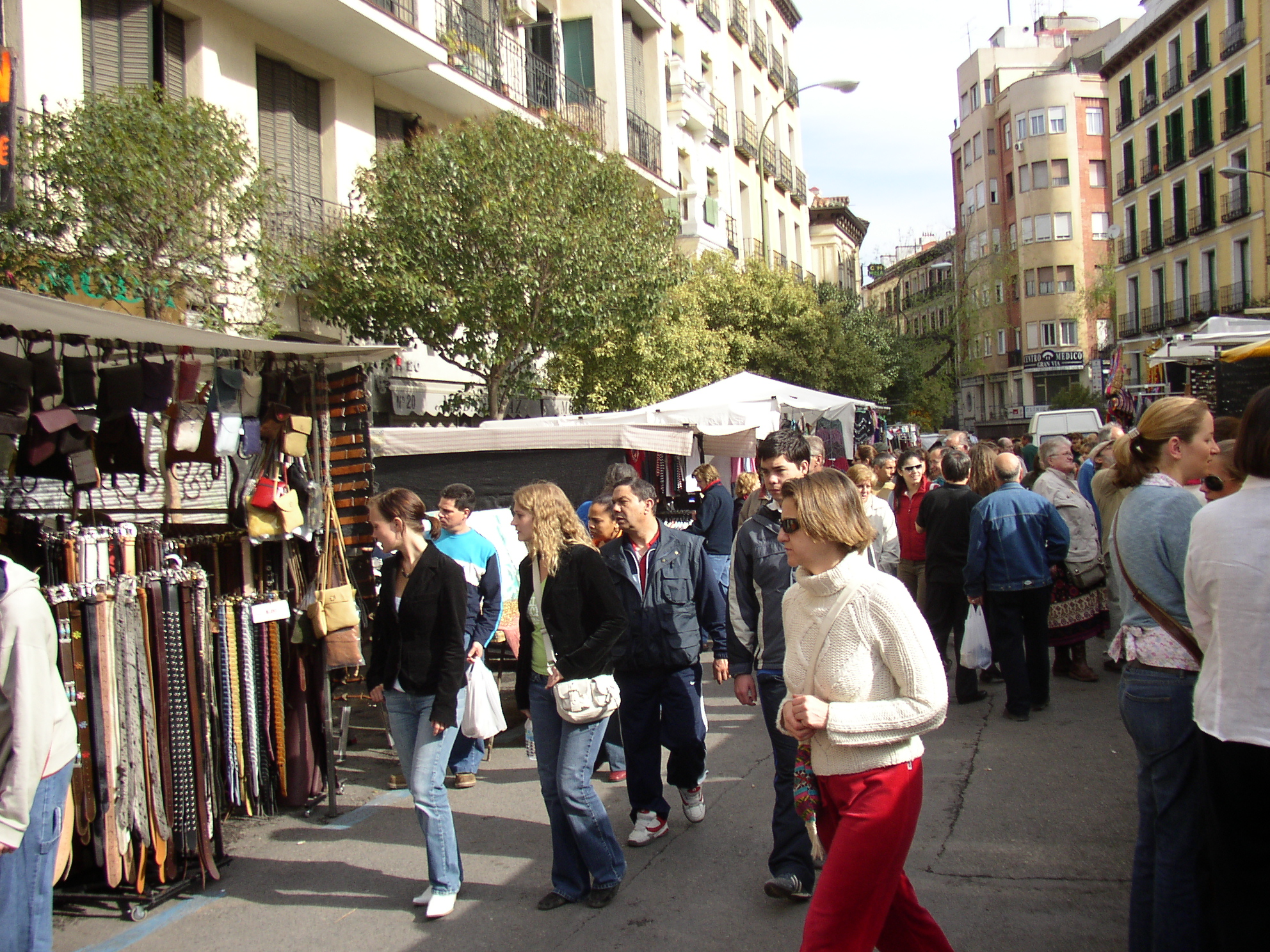
If there is anything distinctive in the city of Madrid, this is the Rastro. Madrid would not be the same without the Rastro Market, which belongs to Madrid's Cultural Heritage. This is the most famous street market in the capital and one of the oldest markets in Spain.
On Sundays and public holidays between 9:00 and 14:00 am, hundreds of street stalls make up this beautiful market around Ribera de Curtidores street and its surroundings. It is an unavoidable visit to every tourist that goes to Madrid, as well as a reference point for Madrid's people.
The Rastro has a medieval origin. Here it's possible to buy almost everything: from first and second-hand clothes, shoes, books and antiques, to fruit, flowers, accessories, collectable items, music, pictures or the most absurd junk. The Rastro spreads trough a close triangle, delimited by Toledo street, Ronda de Toledo street and Embajadores street.
To facilitate the purchase to the thousands of visitors who come to the market, the products are distributed by streets. So, along the Ribera de Curtidores street are located the handicraft stalls, the antique stalls and the first-hand clothes stalls. Around San Cayetano street are located the painting and the artwork stalls. This street is known as 'the street of the painters', because there are located many art galleries, art shops and all the street art stalls. The General Vara del Rey square concentrates the second-hand clothes stalls. In the Campillo esplanade you'll find a wide variety of articles: leather, tools, music, press, etc. The lovers of antiques have to go to Rodas street.
This market is centrally located, easily accessible on foot, by metro or by bus. The closest metro stations are La Latina and Puerta de Toledo.
The Rastro Market has a large number of visitors: around 100,000 people go every Sunday morning to this market, which enjoys a great international reputation. Many tourists make a stop-over in Madrid only to go to the Rastro. On bank holidays it has less stalls and less people. Those who don't like agglomerations, a bank holiday is the perfect day to visit the Rastro.
The word Rastro comes from a place where the cows were slaughtered, the slaughter house. When the cow were slaughtered and sold they moved them from one place to another leaving a trail of blood. Around the slaughter house we could found the tanneries, a place where the cows were exploited for their skins tanned. From this activity and the name of the street, where it is located, the nickname comes to life "La Ribera de Curtidores".
After a morning of shopping and haggling, the best option is to take some tapas and to drink a good glass of wine. Then, to enjoy of the perfect accommodation, rent an Apartment in Madrid.
No hay comentarios:
Publicar un comentario